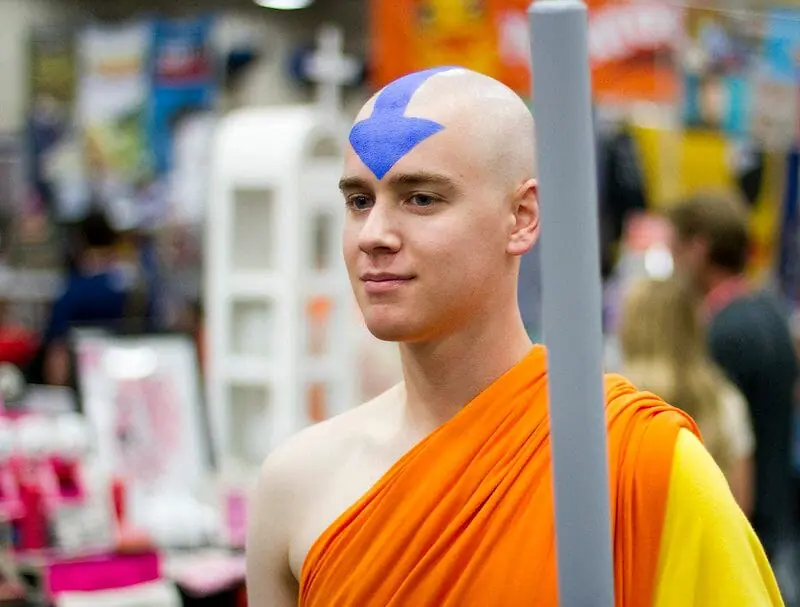The television show Avatar: The Last Airbender brought generation Z joy when they were kids. Now it’s returned to the spotlight in an otherwise stressful year. What is it about Avatar that sparks relevance in 2020?
What is Avatar: The Last Airbender?
The show aired on Nickelodeon from 2005 to 2008. For those who are unfamiliar, Avatar is set in a fictional universe where people can telekinetically control the four elements: water, earth, fire and air. Each element has a corresponding culture and people. Although not everyone in this fictional world is able to control an element, each community depicted has their own set of values and beliefs.
In this universe there is an avatar: a person able to control all four elements and who is meant to keep balance in the world. But prior to the start of the show, the avatar had vanished for a hundred years. In that time, the fire nation launched an attack on the rest of the world with the goal to assimilate all other nations into their culture, which they believe to be superior. The show begins with two kids from the water tribe, Katara and Sokka, finding a mysterious airbender named Aang trapped in an iceberg. We soon find out Aang is the avatar who went missing all those years ago. This launches the story of Aang and his friends travelling the world so he can master all four elements and end the fire nation’s war on the world.
Avatar was unique for its time because it uses non-European cultures as the basis for its fantasy universe. The fire nation was inspired by Imperial Japanese culture, the water tribe by Inuit culture, the earth kingdom by Chinese culture, and the air nomads were inspired by Tibetan monks. It’s worth noting the show creators are two white American men, but critics have praised the show for its careful depiction of Asian culture and marital arts.
Parallels to real life

Ethan Bligh, a first-year arts student at Dalhousie University, was struck by the political parallels between the show and today’s political systems.
“[It] can seem really fascist,” Bligh says, “how the fire nation views so much of this war, where they have completely erased history and then rewritten it to make them the good guys. But also the end of season two. . . has a lot to do with monarchies and secret governments and the power dynamic between people.” Bligh also noted the similarities between the fire nation and the current United States’ governance.
The wide range of protests that have occurred in the past few years, the causes ranging from stopping climate change to ending police violence against Blackpeople, show how disappointed many young people around the world are with their political leaders. Youth may find unfortunate parallels between the leadership of their countries and the failed leadership of different nations in Avatar.
An optimistic message
However, the show’s main message of hope is what makes it an uplifting story as opposed to a dark mirror of the current global situation. The show repeatedly emphasizes hope as the most important thing the main characters need to hold onto in times of struggle. The show’s recent increase in popularity could be the result of youth reaching out to feel that hope for themselves.
Another draw is the relationships and dynamics between characters, and how they were executed. Josh Haglof, a third-year Dalhousie student majoring in environmental science and computer science, was particularly intrigued by the relationships between Aang and Zuko, the fire nation prince who was tasked with capturing the avatar at the start of the show.
“That is kind of like the parallel story throughout the series. . . where Aang saves Zuko and says that maybe they could be friends,” Haglof says. “Then moving on later into the third season where that actually comes together, it’s very satisfying.”
The relationship between these two characters is particularly intriguing to many fans, as is the character of Zuko in general. As the prince of the fire nation, Zuko was raised with certain values and prejudices instilled in him from a young age. But when given the chance, he grows as a person and changes from an antagonistic character in season one to a friend of Aang’s in season three.
Haglof says, “I think that the central message you can take from the show is that you have a lot of ability to change your life for the better, even under extreme circumstances like Zuko’s. Do what makes you happy and what you think is right, versus people around you telling you what’s wrong and right that you don’t agree with. You can’t control destiny. It’s just your life so just kind of go with the flow.”
Ultimately, there may be many reasons for the show’s resurge in popularity in 2020. It could be nostalgia for a simpler time during childhood, where we could tune into a random episode on Nickelodeon with no care in the world. Or maybe in this current political climate, watching a show where a group of kids saves the world gives us hope. Whatever sparked this reawakening in the hearts of gen Z and millennials alike, it’s clear the show continues to bring forth positive feelings to its audience.


Recent Comments